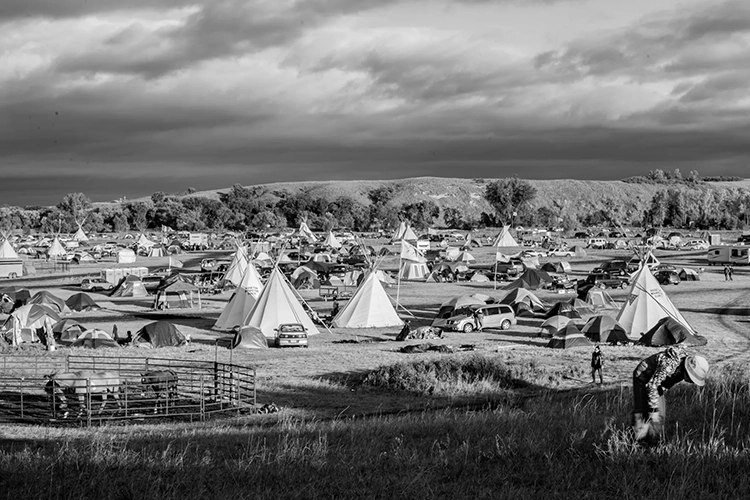Overview
As Indigenous and non-Indigenous scholars and organizers who engage in studies of Indigenous life, politics, and education, settler colonialism, and decolonization, we stand in solidarity with the Indigenous struggle to stop the 1,172 mile Dakota Access Pipeline. Projected to transport hydraulically fractured (or “fracked”) natural gas from the Bakken Oil Fields in North Dakota to the Gulf Coast, DAPL violates the Fort Laramie Treaties signed in 1851 and 1868 by the United States and bands of the Sioux and other tribes, as well as recent United States environmental regulations.
The dangers to the natural environment and local Indigenous communities are grave. While the pipeline was originally planned upriver from the predominantly white border town of Bismarck, North Dakota, the new route passes immediately above the Standing Rock Sioux Reservation, running under Lake Oahe and tributaries of Lake Sakakawea, crossing the Missouri River twice, and the Mississippi River once. Not only may this pipeline contaminate a vital water source for Standing Rock, and millions of people in the surrounding area, but it also threatens one of the largest subterranean water tables in the world, the Ogallala Aquifer. In the last 2 years, over 300 pipeline leaks and spills have damaged irreparably land, water, and animal life — ecosystems as a whole. It is also clear that the benefits of this construction project are tied to the prosperity of a very few — in particular, a private energy corporation, Energy Transfer Partners, based in Dallas, Texas and their financial backers.







